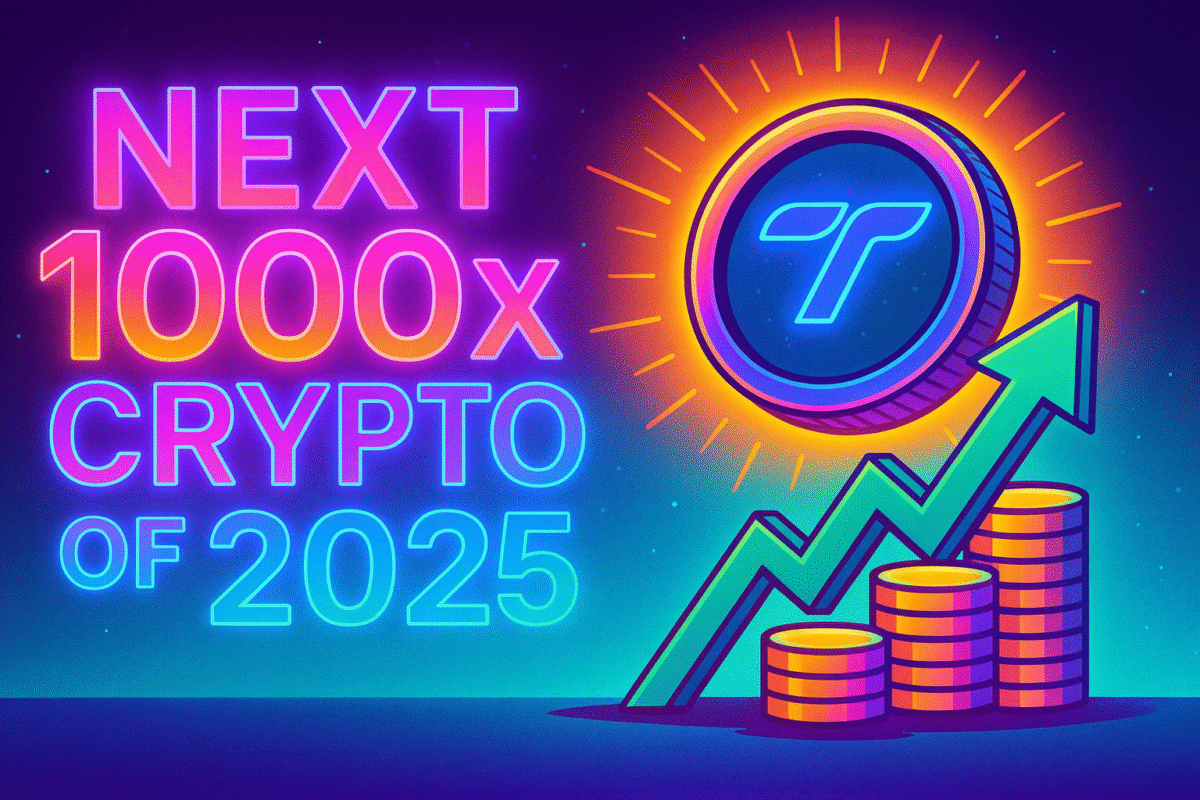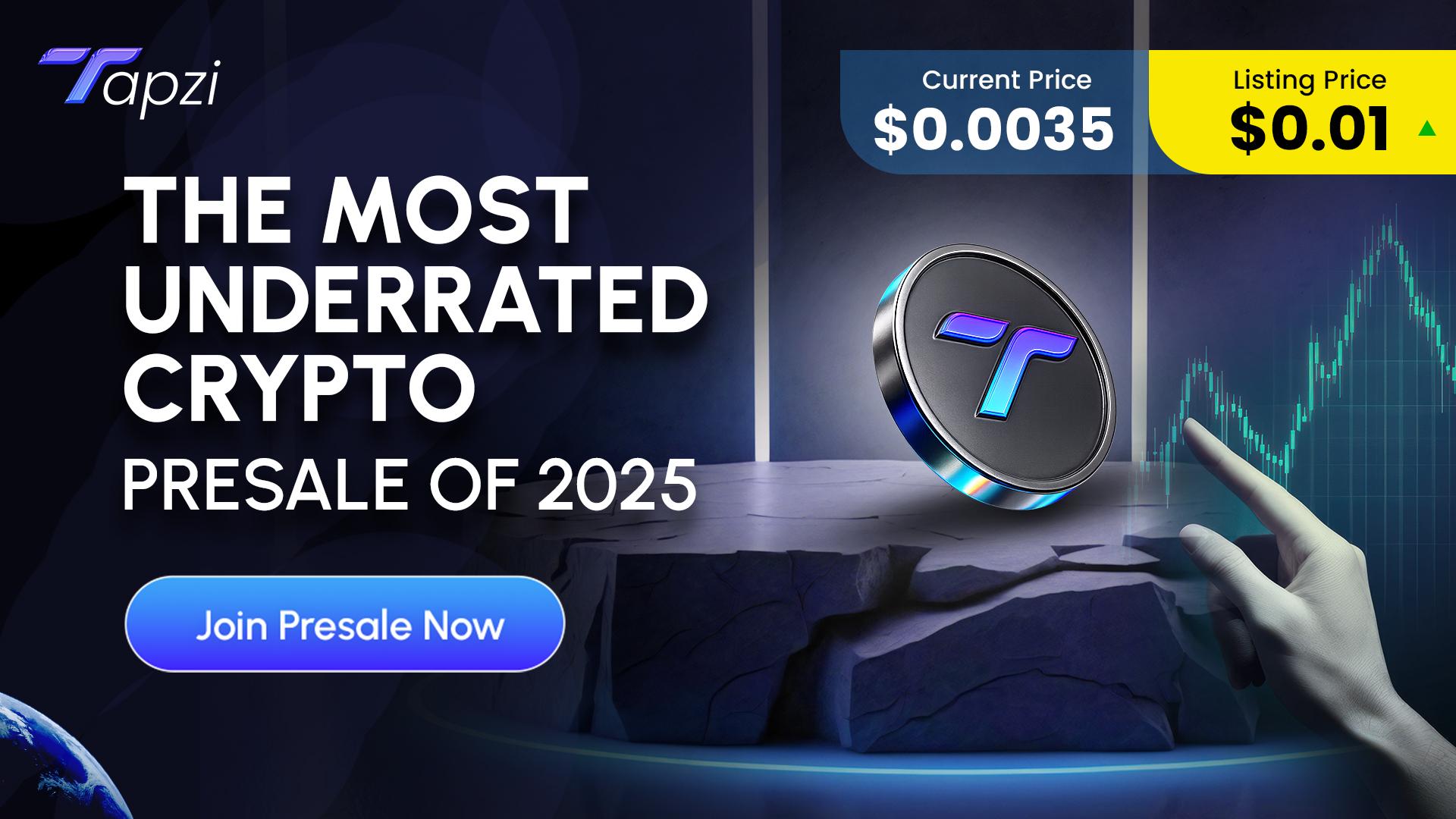Regulation is moving fast: India is leaning away from comprehensive crypto legislation, citing systemic risk concerns. In the U.S., the new GENIUS Act sets stricter rules for stablecoins and signals a broader push toward regulatory clarity. These shifts are elevating the importance of compliance, smart token design, and utility-first models.
Against this backdrop, presales like Tapzi, which emphasize long-term economic design over speculative hype, could become the preferred path for serious investors building toward early retirement. In such a scenario of tightening crypto regulations, investors seeking the “next big thing” are turning their attention to early-stage presales, especially those with real utility and scarcity baked in.
Tapzi (TAPZI) is one such project catching traction. With a capped token supply, skill-based gaming mechanics, and a retention-driven economy, it’s positioning itself as more than just another token launch. Let’s explore how Tapzi operates, what sets it apart, and whether it deserves a spot in your early-retirement crypto playbook.
Tokenomics & Scarcity: Does Tapzi Have the Potential For Value?
Tapzi’s economic structure is built around finite supply + utility; a rare combination among gaming tokens. Its capped overall issuance ensures scarcity is a core driver. Within that, the distribution is designed to reward early participants without opening the floodgates later.
- A significant portion of TAPZI is reserved for staking rewards and prize pools, meaning ongoing gameplay creates continuous demand.
- The presale is structured in phases with vesting, preventing immediate dumps.
- Because token supply is limited, each incremental user and transaction adds pressure to the value side of supply/demand.
Click Here to Join the $TAPZI Presale Before It’s Too Late!
This approach aligns investor incentives with platform growth. Early backers benefit when the system scales, while new users still find utility through staking and competitive play. In a tighter regulatory climate, scarcity-backed, utility-linked tokens are less risky than pure meme or inflationary coins.
Gaming Ecosystem & User Retention: Skill, Not Luck
Where many blockchain games crash and burn after launch hype, Tapzi builds its core around sustained engagement. The mechanics reward consistency and success, not one-off activity or random drops.
- Gameplay is PvP and skill-based: Chess, Checkers, Rock-Paper-Scissors, Tic Tac Toe, etc.
- Rewards scale with performance, encouraging improvement rather than passive play.
- Early beta reports: over 5,200 PvP matches in a month, with users averaging 7–8 matches/week.
- Retention metrics exceeding 65% suggest players are staying past the novelty phase.
By weaving retention into the system rather than relying on external promotion, Tapzi aims to create a self-renewing user base, a critical component for long-term value in any gaming token.
How Tapzi Aligns With Token Holders & Players?
If you hold TAPZI, you are more than a speculator; you become part of the platform’s performance engine.
- Over 2.3 million TAPZI tokens are currently staked in contests and leaderboards.
- Typical yields range between 12 and 15% APY, boosted during competitions.
- Users who stake more and compete more intensely tend to unlock access to higher-tier features and tournaments.
This structure encourages hold-and-play behavior rather than quick flips, which better suits investors aiming for retirement-scale gains rather than day trading volatility.

Real-World ROI: $2,000 Scenario
Let’s walk the walk. Suppose you allocate $2,000 into Tapzi during its presale; what kind of upside is plausible?
If Tapzi captures even a modest share of gaming activity, applying its retention and staking mechanics could push your stake to $15,000–$20,000 across growth cycles, a potential 7x to 10x return. This isn’t naive optimism; instead, it hinges on real metrics:
- Continued user growth and retention
- Sustainable staking demand
- NFT and in-game transaction volume
- Subsequent price surges in each stage
When you combine scarcity + utility + retention, the upside becomes asymmetrical: more upside, less downside, which is exactly the kind of profile early retirement investors look for.
Stability, Policy, and Momentum of the Crypto Market
Bitcoin is holding firm, providing a stable base for market rotations into presales. A stable BTC often means liquidity starts flowing into altcoins and early-stage projects.
In India, regulators are delaying a broad crypto bill, citing systemic risk concerns and favoring partial oversight for now. In the U.S., the GENIUS Act was passed in mid-2025, setting rules around stablecoins and signaling that federal crypto regulation is gaining traction.
These developments underscore the importance of compliance and well-architected economics. Tapzi’s design of utility-first, scarcity-backed, retention-driven stands out as better suited to navigate shifting regulatory winds.
Technical Analysis: XRP (as of Sept 27, 2025)
Let’s glimpse a low-priced altcoin and see what it offers as a benchmark.
- XRP traded around $0.60.
- Support zones: $0.55–$0.58
- Resistance zones: $0.62–$0.65
- Short-tailed trend: If it breaks above $0.62, upside toward $0.68 is possible; if it slips below $0.58, downside to $0.52 may follow.
XRP shows how sentiment and utility interplay. When regulated assets like XRP move on clarity or adoption, capital flows to promising early-stage projects. If XRP gains traction, many investors will rotate into new presales like Tapzi with stronger utility narratives.
The Bottom Line: Best Crypto Presale
When building a crypto portfolio for early retirement, you don’t want high risk or empty promises; you want projects with measurable demand, scarcity, and sustainable economics. Tapzi checks those boxes.
- Its fixed supply adds scarcity and deflationary pressure.
- Its skill-based ecosystem ensures engagement, not pass-through usage.
- Staking rewards and NFT demand tie token demand to real platform activity.
- Early presale momentum shows market confidence.
In a regulation-heavy future, utility-first presales like Tapzi may become the safer, smarter bets.
Frequently Asked Questions
Q1: What is the Tapzi crypto presale?
Tapzi’s presale is a staged token offering with vesting schedules and caps, designed to seed its gaming ecosystem while avoiding mass dumps.
Q2: How does Tapzi token staking work?
Users stake TAPZI to enter tournaments, compete in leaderboards, and unlock higher-tier features. Rewards scale with engagement and performance.
Q3: Is Tapzi a good crypto investment for 2025–2030?
Tapzi blends scarcity, utility, and retention mechanics, which positions it well for sustained growth, especially in a regulated landscape.
Q4: How does the new regulation affect Tapzi?
Tapzi’s utility-heavy, compliance-friendly model is better positioned to thrive under stricter crypto laws, unlike speculative or unbacked tokens.
Q5: Why compare Tapzi with XRP or other altcoins?
Movements in regulated and low-cost assets often cue sentiment shifts. When XRP or similar projects gain traction, capital may rotate into emerging utility presales like Tapzi.
Disclaimer: This media platform provides the content of this article on an "as-is" basis, without any warranties or representations of any kind, express or implied. We assume no responsibility for any inaccuracies, errors, or omissions. We do not assume any responsibility or liability for the accuracy, content, images, videos, licenses, completeness, legality, or reliability of the information presented herein. Any concerns, complaints, or copyright issues related to this article should be directed to the content provider mentioned above.








